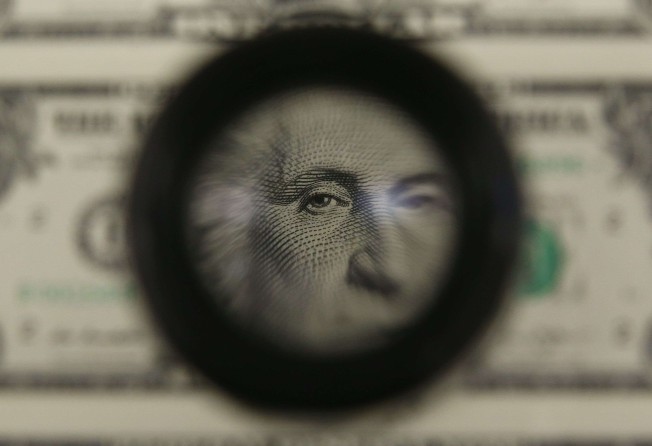Dollar soars to highest since April 2003

The US dollar soared to its highest since April 2003 against a basket of currencies on Wednesday, reaching its strongest in a year against the euro, as major banks and investors debated the possibility of another move towards euro-dollar parity.
After a week-long rally driven by the post-election surge in US bond yields, some of the major banks have been sounding more cautious on the dollar’s immediate prospects.
But fuelled by expectations of an inflationary push from the administration of President-elect Donald Trump that would spur more rises in Federal Reserve interest rates, it advanced past US$1.07 per euro for the first time since December 2015.
It also rose 0.5 per cent against the yen to its highest since June, pushing the dollar index up a further 0.3 per cent to 100.53. It has gained almost 3 per cent since Trump’s election victory just over a week ago.
Notably, however, St Louis Fed chief James Bullard’s comment that it would be a surprise now if the US central bank did not raise rates next month had little impact on the market.
“Broad gains are clearly meeting more resistance as a December Fed [rise] is now 95 per cent discounted and much uncertainty still surrounds the broader direction of US economic policy under Trump,” said Adam Cole, head of G10 foreign-exchange strategy with RBC in London.
Trump’s victory has raised concern about further, potentially destabilising victories for populists in elections across Europe in the coming year, and a number of banks and traders have predicted the euro will head back towards the lows around 1.05 at which the last dollar rally stalled last year.
That also raises the prospect of another attack on parity with the single currency.
“Can the dollar go to parity with the euro? Well, we are only 7 to 8 per cent away, so probably yes,” said Adnan Akant, head of foreign exchange at Fischer Francis Trees and Watts, a New York-based institutional currency manager owned by BNP Paribas.
“Under Trump, we are looking at fiscal policy divergence [with Europe and Japan], which should be very positive for the dollar. Protectionism is a risk, but if that is focused on emerging markets, it may perversely also be a dollar positive.”
Against the yen, the dollar gained 0.2 per cent to 109.69 yen after reaching a five-month peak of 109.34 on Tuesday. It gained 0.3 per cent against the British pound and the Canadian dollar, and was almost 1 per cent higher against the Australian dollar, weakened by a dip in the price of oil and other major commodities.
“Buy dollars is still probably the main trade,” said a trader with another international bank in London.
“The initial knee-jerk trade has run its course now. We might see some to-and-froing, but in general the dollar should stay strong. I don’t know about parity with the euro, but we may definitely take another crack at US$1.05.”